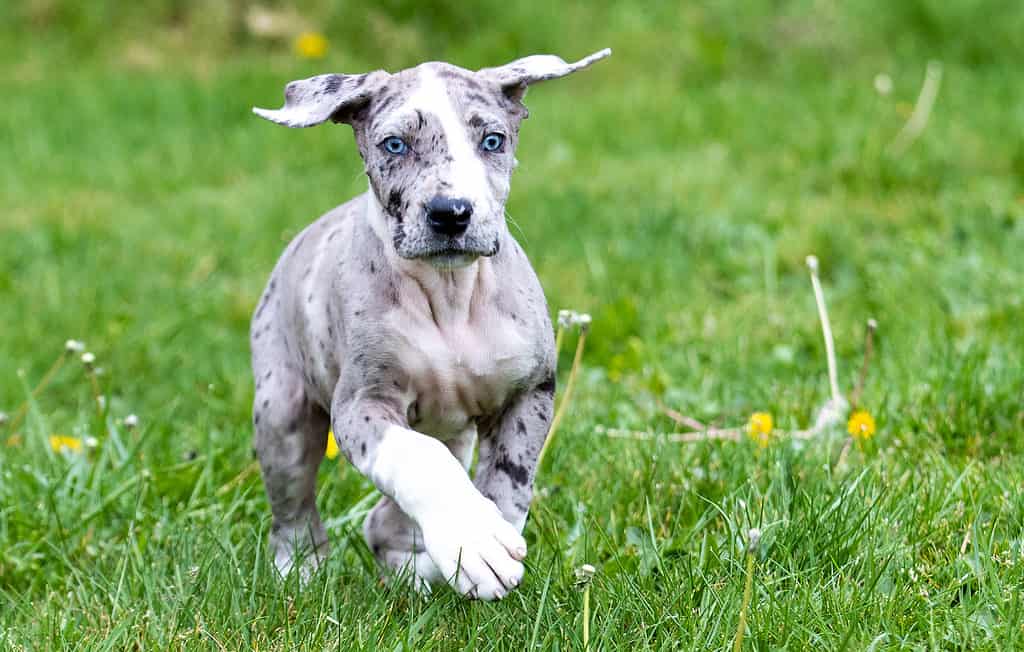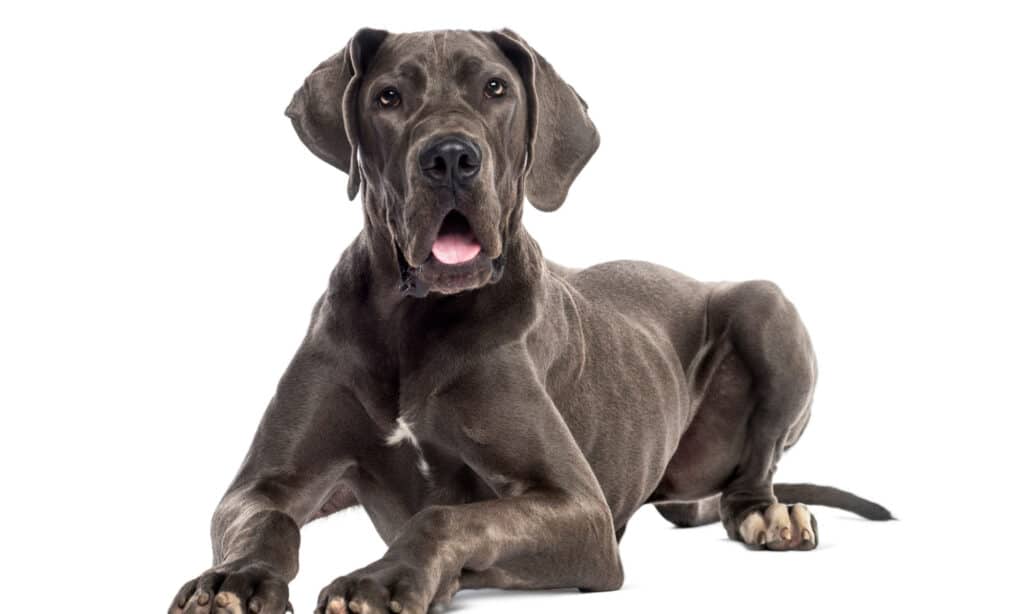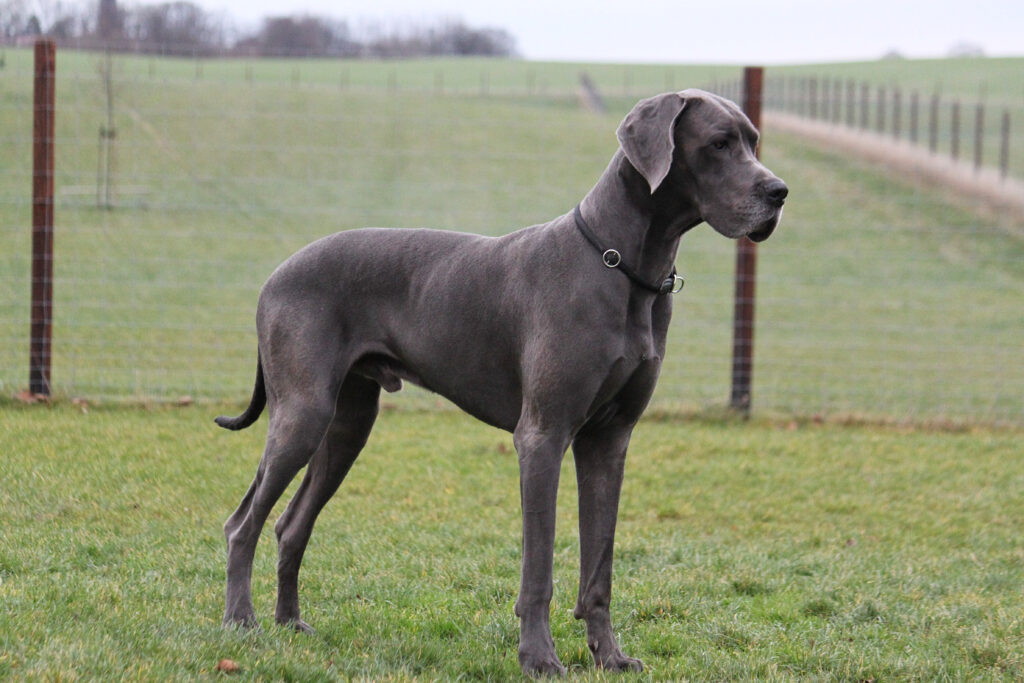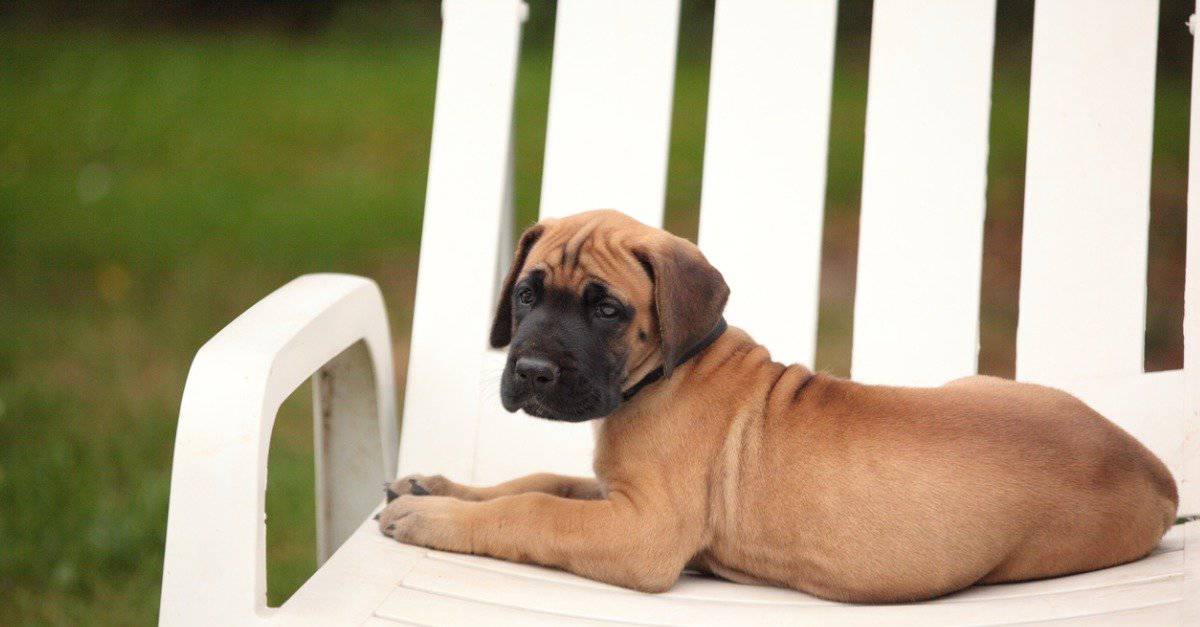If you’re a fan of the classic cartoon series Scooby-Doo, then you’re likely familiar with one of its most memorable characters: Scrappy Doo. Despite being a popular figure in the franchise, many people still wonder about his breed and where he comes from. That’s why we’ve put together this article to provide all the information you need on what kind of dog Scrappy Doo is — including pictures and facts! Whether you’re a lifelong fan or simply curious about this beloved character, read on to learn more about Scrappy’s unique origins and characteristics.
What Kind of Dog is Scrappy Doo?

Scrappy Doo is a Great Dane puppy.
©MPH Photos/Shutterstock.com
If you’re a fan of the beloved animated television show Scooby Doo, then you undoubtedly know who Scrappy Doo is. While some may have assumed that he was just a miniature version of his uncle, Scooby, the truth is that Scrappy Doo is actually a Great Dane puppy!
This means that while Scooby is fully grown and towering over most humans at six feet tall when standing on his hind legs, Scrappy is still in the early stages of development and likely hasn’t yet reached his full-size potential. However, even as a young pup, Scrappy possesses many of the same traits as his older relative – including loyalty, bravery, and an insatiable appetite for snacks.
Despite being smaller than his famous uncle now, there’s no doubt that Scrappy has already made an impact on fans around the world with his playful personality and can-do attitude. And whether you prefer your dogs big or small (or somewhere in between), it’s clear that both Scooby and little Scrappy will remain beloved icons for generations to come!
About Scrappy Doo

Great Danes cost more to insure because they’re prone to certain health issues.
©iStock.com/GlobalP
Scrappy Doo, whose full name is Scrappy Cornelius Doo, was introduced to the mystery-solving, crime-busting team in 1979 as a Great Dane puppy who happened to be Scooby Doo’s fearless nephew. Despite his small size compared to that of his Uncle Scoob, Scrappy was always ready and eager to take on any monster they encountered with catchphrases like “Lemme at ’em!” and “Puppy Power!” This little pup had a similar appearance to Scooby but idolized his uncle.
Joseph Barbera from Hanna-Barbera Productions created Scrappy Doo when the ratings for the show were falling almost to the cancellation point. The introduction of this new character proved successful in saving the day for the show and ensured its continuation beyond that point.
Throughout most of the series, famous disc jockey Casey Kasem voiced Scrappy Doo’s character. His energetic voice perfectly captured Scrappy’s confident and adventurous spirit, making him an endearing fan favorite among viewers.
In conclusion, while many may wonder about what kind of dog Scrappy Doo really is or where he came from, it is evident that this lively, Great Dane puppy played a crucial role in saving one of our favorite childhood cartoons from being canceled!
About Great Danes

Great Danes are often considered to be gentle giants. Though big, these dogs are playful and loyal.
©iStock.com/Credit:BiancaGrueneberg
The Great Dane is a giant dog breed that originated in Germany. They are known for their immense size and gentle nature, making them popular as family pets. Great Danes can weigh up to 200 pounds and stand up to 32 inches tall at the shoulder. Despite their large size, they are graceful and athletic dogs with sleek coats that come in various colors such as black, blue, fawn, harlequin (a mix of white with black spots), and mantle (black with white markings).
Great Danes have a friendly temperament and are generally good around children. However, due to their massive size, it’s important to supervise interactions between children and these dogs. Great Danes also require regular exercise but don’t need as much space as one might expect, given their size. They can be content living in apartments or smaller homes if provided enough physical activity.
While Great Danes may look intimidating because of their imposing stature, they’re actually quite affectionate creatures who thrive on human companionship. They make excellent watchdogs due to their protective instincts but aren’t overly aggressive by nature unless provoked or trained for protection purposes.
Overall, the Great Dane is an impressive breed that requires proper training and socialization from puppyhood onward due to its sheer strength and potential for unintentional harm if not properly managed. But with proper care, love, attention, and patience, a great dane proves itself a loyal companion who can bring joy into any home!
5 Impressive Great Dane Facts

Great Danes have a gentle, sweet temperament.
©iStock.com/Jesus Manuel Souto Blanco
Not Danish – The Great Dane is a breed that commands attention and admiration. Despite its name, this majestic dog actually originated in Germany during the 19th century. The breed was originally developed for hunting wild boar, which required both strength and agility. In order to accomplish this task, the Great Dane was bred with various other breeds, including mastiffs and greyhounds.
Today, the Great Dane has become a popular family pet due to its friendly nature and affectionate personality. These dogs are often referred to as “Apollos of the canine world” due to their impressive appearance, large size, courage, and elegance. Great Danes can grow up to 32 inches tall at the shoulder and weigh over 100 pounds! However, despite their intimidating size, they are known for being gentle giants who love nothing more than spending time with their families.
World’s Tallest Dogs – Great Danes are one of the largest dog breeds in the world. Male Great Danes can reach an impressive height of up to 32 inches at their shoulder and weigh a whopping 175 pounds, while females are only slightly smaller, measuring up to 30 inches and weighing around 140 pounds. Despite their massive size, these gentle giants possess a graceful and dignified demeanor in their movement and behavior that belies their imposing physical stature.
When standing beside a Great Dane, humans may find themselves looking up due to their towering height. However, this breed is known for being incredibly friendly and affectionate with people they know well. They make excellent family pets due to their calm temperament but require significant exercise and attention from their owners.
Great Noses – Great Danes are known for their powerful sense of smell, which stems from their origins as boar-hunting dogs. Due to this natural inclination, it is important for owners to keep their great dane on a leash during walks in order to prevent them from wandering off in pursuit of an enticing scent. Furthermore, when allowing a great dane access to any outdoor space, such as a yard or garden area, it is essential that the area be securely fenced in order to prevent the dog from escaping and potentially getting lost or injured while following its nose.
Awesome Athletes – Great Danes are known for their extra-large size, but their love for dog sports is often overlooked. These dogs possess incredible strength and intelligence, making them excellent competitors in a variety of activities. One such activity is agility, which involves navigating through an obstacle course as quickly and accurately as possible. Great Danes excel at this sport due to their nimble movements and quick reflexes.
In addition to agility, great Danes also make fantastic obedience competitors. This sport requires dogs to follow commands from their handler while performing a series of tasks or maneuvers. Great Danes have been trained as police dogs in the past due to their natural obedience skills.
Tracking is another popular dog sport that Great Danes enjoy participating in. This activity involves following a scent trail laid out by trainers over various terrains such as fields or forests. The keen sense of smell possessed by these gentle giants makes them ideal candidates for tracking competitions.
Weight pulls are yet another area where Great Danes shine in competition settings. These powerful canines can pull up to ten times their weight when properly trained and conditioned.
Finally, flyball rounds out the list of dog sports that Great Danes thrive in. In this fast-paced game, teams race against each other across an obstacle course while carrying balls back and forth between handlers on opposite ends of the field.
Expensive Pets – Great Danes are one of the largest dog breeds in existence, and as such, they come with a set of unique challenges that need to be taken into account before bringing one into your home. One of the most significant considerations is their size. Great Danes can weigh up to 200 pounds and stand over three feet tall at the shoulder. This means they require more space than other dogs, both inside and outside your home.
Another factor to consider is the cost associated with owning a Great Dane. Their large size means they require significantly more food than smaller dogs. Feeding them high-quality food can be expensive, especially if you opt for premium brands. Additionally, because Great Danes are prone to certain health issues such as hip dysplasia and bloat, medical expenses may be higher than average throughout their lifetime.
Finally, it’s important to keep in mind that owning a Great Dane can lead to increased wear and tear on your home and car due to their size and strength. It’s something potential owners should think about before making any commitments.
Ready to discover the top 10 cutest dog breeds in the entire world?
How about the fastest dogs, the largest dogs and those that are -- quite frankly -- just the kindest dogs on the planet? Each day, AZ Animals sends out lists just like this to our thousands of email subscribers. And the best part? It's FREE. Join today by entering your email below.
Thank you for reading! Have some feedback for us? Contact the AZ Animals editorial team.








